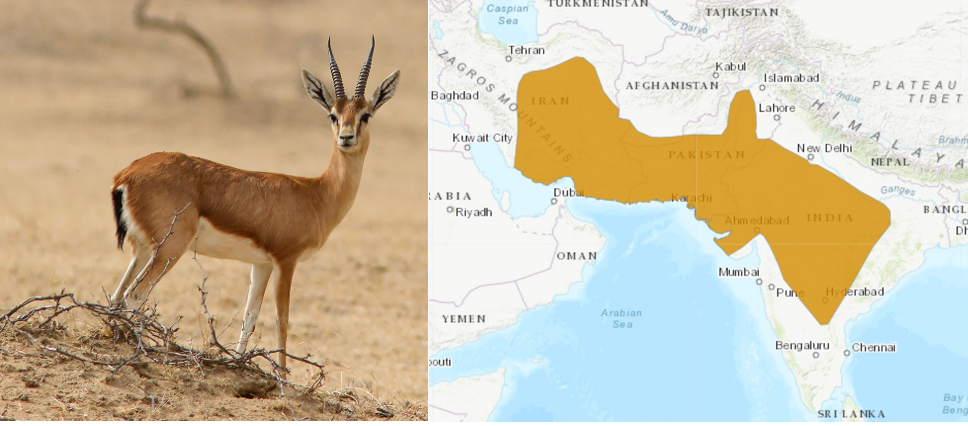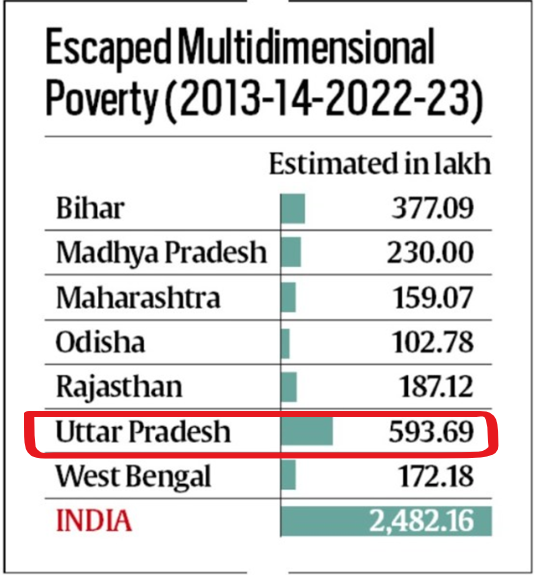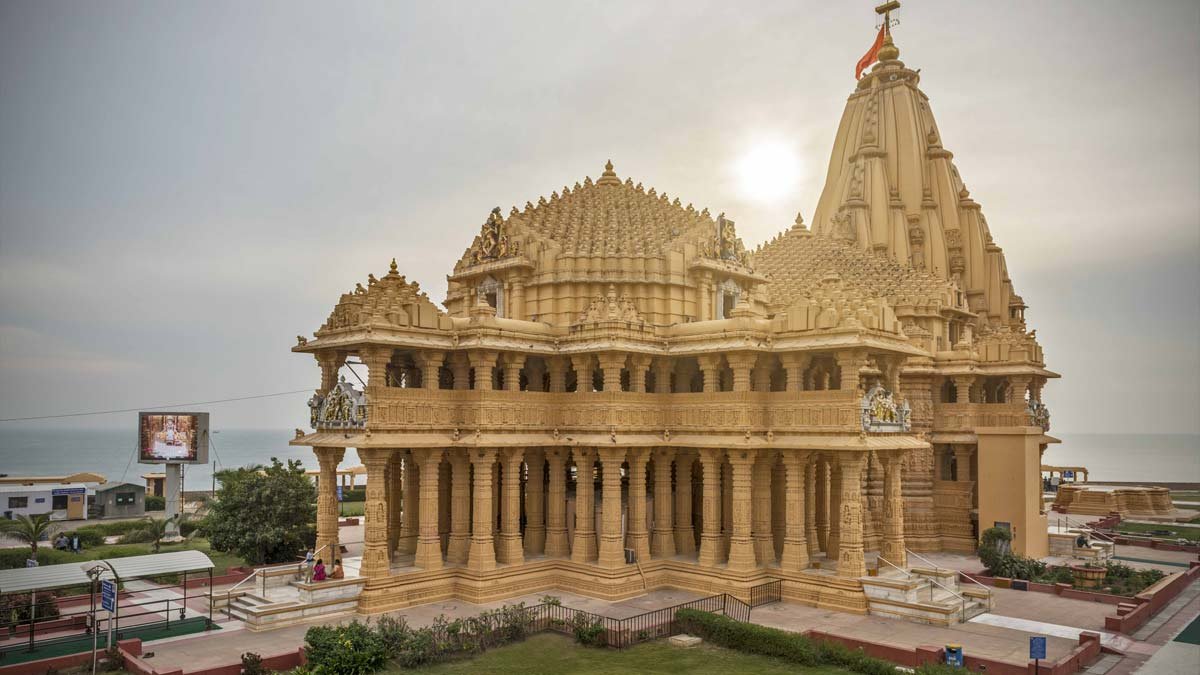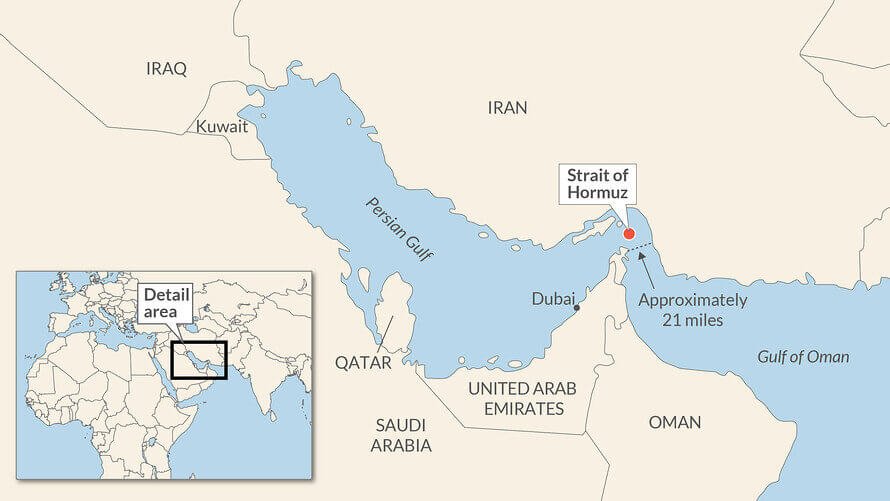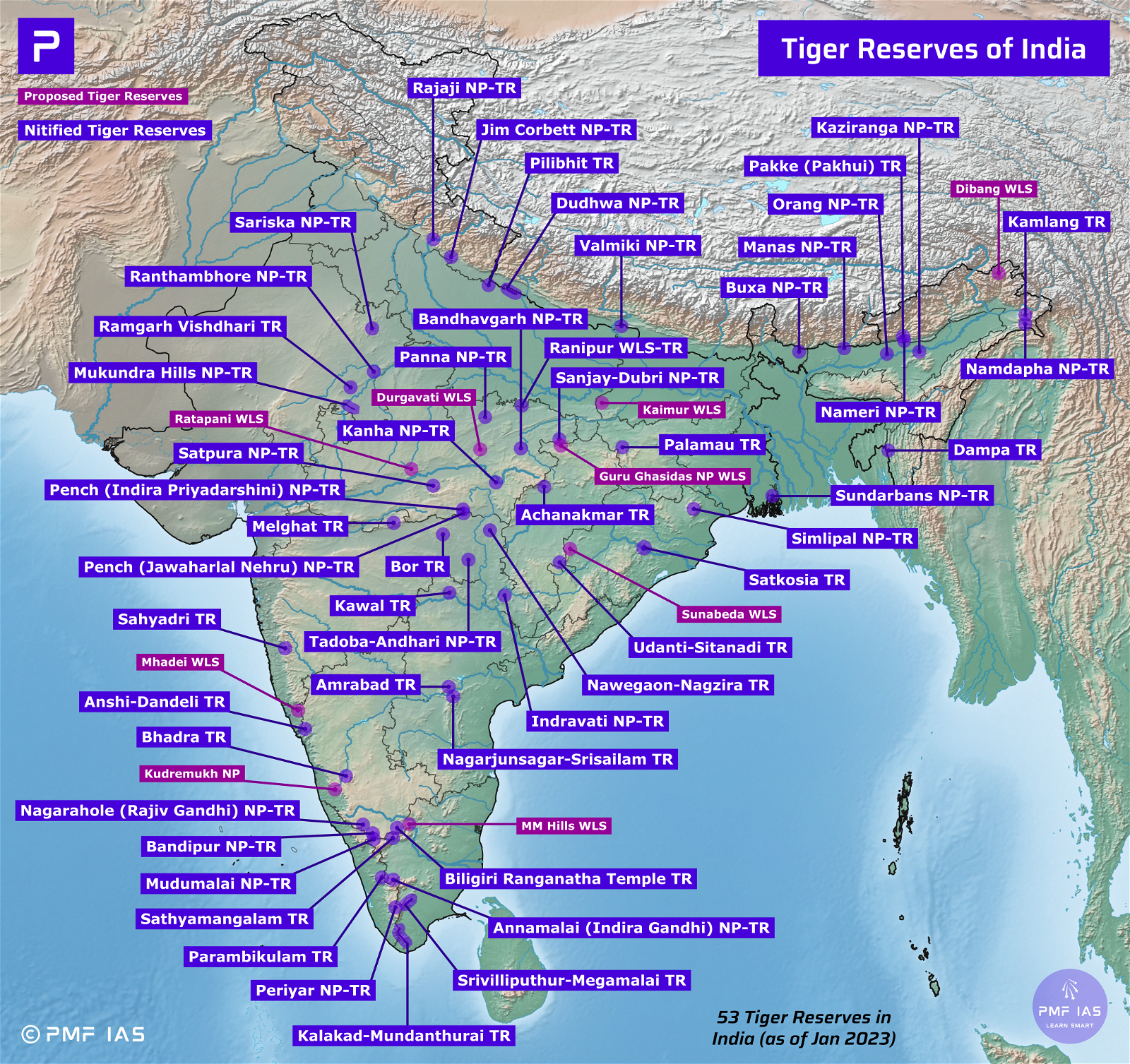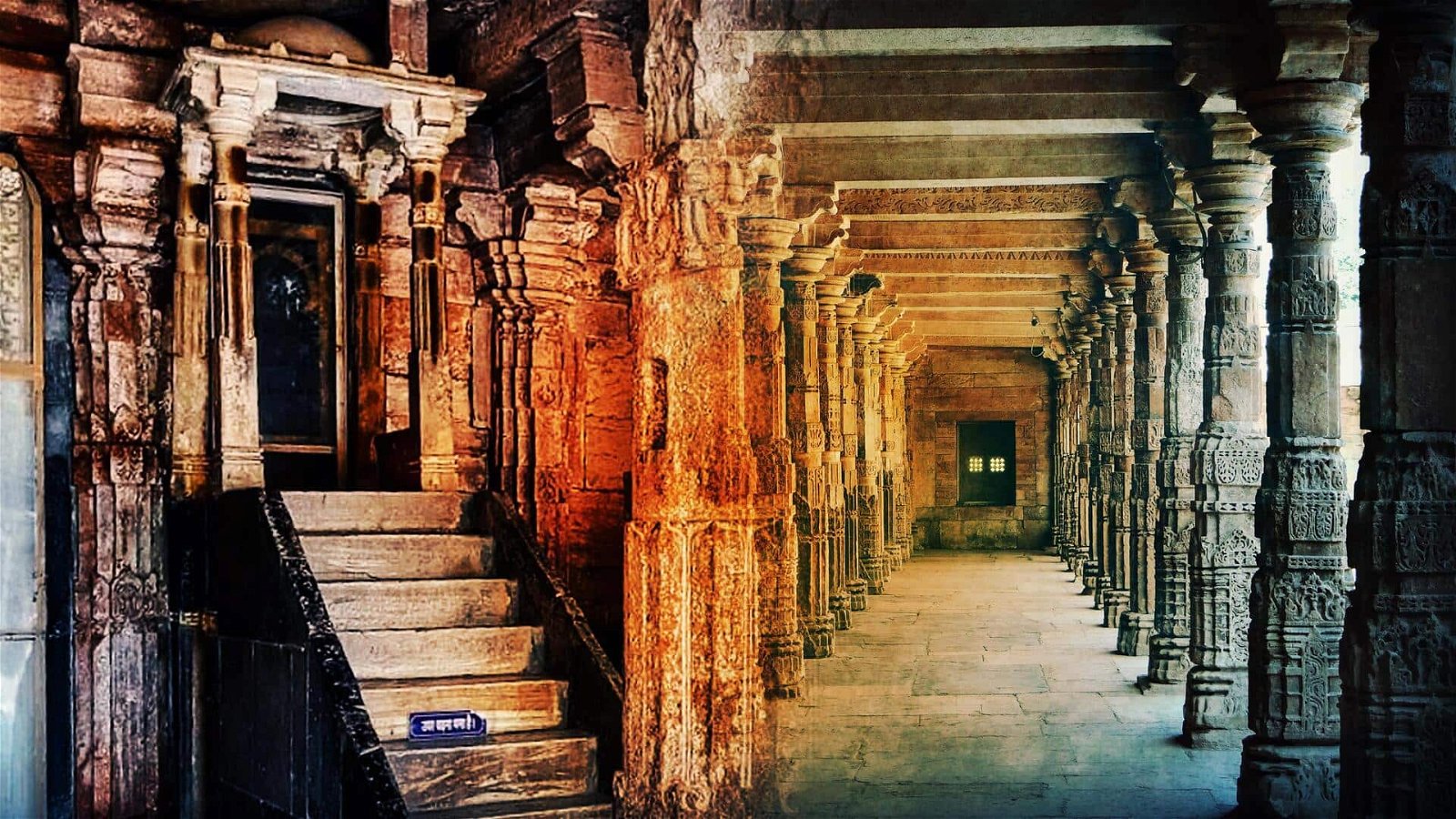
Current Affairs January 03, 2024: Citizenship Amendment Act (CAA), 2019, Psychoanalysis, Separate Religious Code for Sarna Religion, China – Taiwan Conflict, Normalisation of U.S. – China Relations, General Consent to CBI
Subscribers of "Current Affairs" course can Download Daily Current Affairs in PDF/DOC
Subscribe to Never Miss an Important Update! Assured Discounts on New Products!
Must Join PMF IAS Telegram Channel & PMF IAS History Telegram Channel
{GS1 – A&C – Religion} Separate Religious Code for Sarna Religion
- Context (DTE): The demand for a separate religious code for the Sarna religion has led to stir in West Bengal.
- The term ‘Sarna’ is derived from the Mundari language, specifically the word ‘Sar‘ which means a grove of Sal trees.
- Sarna, also known as “Sarnaism” or “Adi Dharam”, is a tribal-religious practice largely followed by the indigenous (Adivasi) communities of India such as the Munda, Oraon, Kharia, and Santhal tribes.
- The worship of a deity known as ‘Dharti Aayo’ or ‘Mother Earth’, is common among followers of Sarna.
- They worship in sacred groves often having designated trees or groves that they consider holy. These sacred groves are known as Sarna Sthal or Jaher.
- The core tenet of the ‘Sarna’ faith revolves around “Jal (water), Jungle (forest), Zameen (land),” with followers venerating trees and hills while emphasizing forest preservation.
- Their festivals are inclusive and gender-neutral and promote peaceful coexistence with nature.
- Their festivals and rituals revolve around the agricultural calendar and the cycles of nature.
- There’s an extensive oral tradition but no centralized religious book or scripture like the Bible/Quran.
- Though the community has a significant presence in Jharkhand, Chhattisgarh, Odisha, and West Bengal, the religion is still not officially recognized by the Indian government.
- This has led to protests by the Sarna community pushing for official recognition.
Need for a separate code
- While many follow the Hindu religion, some have converted to Christianity. Thus, need for a separate code “to save religious identity”.
- The National Commission for Scheduled Tribes also recommended that the Sarna religion be accorded an independent category in the religion code under the Census of India.
Granting a new religious code: The process
- Art 25 of the IC guarantees Freedom of Religion to all citizens.
- Currently, 6 religious codes are recognized in India: Hinduism, Islam, Christianity, Sikhism, Buddhism, and Jainism.
- Establishing a separate religious code requires the enactment of legislation passed by both the Houses of Parliament.
Preserving Sarna Religion: The Way Ahead
- Constitutional recognition of the unique cultural identity of Sarna followers.
- Documentation of traditions, establishment of cultural centers, and integration of Sarna heritage into educational curricula.
- Leveraging the environmental significance of Sarna practices to integrate them into broader conservation strategies.
- Advocating for legal frameworks designed for the protection of indigenous cultural practices.
- Seeking international recognition, along with implementing community empowerment programmes.
{GS1 – Geo – EG – Mineral Resources} Discovery of Lithium Deposits
- Context (LM): Scientists have discovered a massive lithium deposit beneath California’s Salton Sea, holding an estimated 18 million tons of lithium.
Salton Sea
- The Salton Sea is a shallow, saline lake located in the California desert.
- The Sea was created in 1905 when water from the Colorado River spilled out of a poorly constructed California Development Company irrigation system and into a basin in the desert.
- The lake then expanded in size for several years until workers were able to put a stop to the flow.
- The lake lies on the San Andreas Fault within the Salton Trough, which stretches to the Gulf of California in Mexico.
- The lake is bordered on the south by the rich agricultural areas of the Imperial Valley, on the west, by Anza-Borrego Desert State Park, and on the north by the Coachella Valley.
- It is an endorheic lake, meaning that its waters have no outlet to the ocean.
- It has been maintained by irrigation runoff coming from the Imperial and Coachella valleys and nearby rivers ever since its formation.
- It is currently 228 feet below sea level.
- Its salinity (some 45 parts per thousand) far exceeds that of seawater.
- The Sea is an important stopping point for migratory waterfowl and serves as a critical habitat for birds moving south to Mexico and Central America.

Lithium
- Lithium is a non-ferrous, soft, silvery-white alkali metal. It is also called ‘white gold’ due to its high demand for rechargeable batteries.
- Under standard conditions, it is the least dense metal and the least dense solid element.
- Like all alkali metals, lithium is highly reactive and flammable, so it must be stored in a vacuum, inert atmosphere, or inert liquid (such as purified kerosene or mineral oil).
- It exhibits a metallic lustre. But it corrodes quickly in the air to a dull silvery grey, then black tarnish.
- It never occurs freely in nature but occurs mainly as pegmatitic minerals.
- Due to its solubility as an ion, it is present in ocean water and commonly obtained from brines (high-concentration salt solution in water).
- Lithium metal is isolated electrolytically from a mixture of lithium chloride and potassium chloride.
|
{GS2 – IR – China-Taiwan} China – Taiwan Conflict
Republic of China (RoC): Taiwan
- Taiwan (old name: Formosa) is a tiny island off the east coast of China.
- Chinese republicans of the Kuomintang government retreated to Taiwan after the 1949 victory of the communists.

Evolution of Conflict
- On October 10, 1911 (“Double 10”, National Day of Taiwan”), sections of the Manchu army rose in rebellion, overthrowing the Qing dynasty and ending the monarchy.
- On December 29, 1911, the RoC was founded under the leadership of the Kuomintang (KMT) Party.
- Actions against the Chinese communists, who were part of an alliance with the KMT, triggered the civil war that ended in victory for the communists and the retreat of the KMT to Taiwan.
- Since its founding in 1949, the People’s Republic of China (PRC) has maintained that Taiwan must be reunified with the mainland, while the RoC has held out as an “independent” country.
- RoC was the only ‘China’ recognised at the UN until 1971.
- The US inaugurated ties with the PRC through the secret diplomacy of Henry Kissinger, national security adviser to President Richard Nixon.
- The offer of the “One China, Two Systems” solution was declined by the Taiwanese in 1999.
- The 2016 election of President Tsai marked the onset of a sharp pro-independence phase in Taiwan, and the current tensions with China coincided with her re-election in 2020.
- Military exercises and efforts by China to increase control over Taiwan are continued features.
One China Principle and One China Policy
- One China Principle: Taiwan is an inalienable part of China, with its sole legitimate government in Beijing. The PRC follows the One China Principle.
- One China Policy: PRC was and is the only China that does not recognise the Republic of China (ROC, Taiwan) as a separate sovereign entity.
US’s Stand
- The US acknowledges this position but not necessarily its validity.
- The US instead follows the One China Policy. At the same time, the US refuses to give in to the PRC’s demands to recognise Chinese sovereignty over Taiwan.
- This stand of the US is referred to as strategic ambiguity w.r.t to Taiwan.
- US Congress approved the Taiwan Relations Act, allowing informal relations between the US and Taiwan and US arms sales to the island.
- The US has maintained close ties with Taiwan with the assurance of defensive arms to counter any coercion from China.
India’s Stand
- India has followed the one-China policy since 1949, indicating it does not recognise any government other than the PRC in Beijing.
- India only conducts trade and cultural ties with Taiwan.
- India seeks to avoid controversy on a sensitive issue
- India maintained a “studied silence” on the unfolding situation, omitting any mention.
{GS2 – IR – India-Maldives} Hydrographic Pact Withdrawl
- Context (TH): Recently, Maldives decided to revoke the joint hydrographic survey agreement with India.
- Earlier, Male skipped the annual Columbo Security Conclave meeting.
Hydrographic Survey Pact 2019
- It was signed between the Indian Navy and Maldives National Defence Force in 2019.
- The pact allowed India to study the island nation’s territorial waters, ocean relief and tide levels.
Possible Reasons behind the Withdrawal of the Pact
- Dual nature of hydrography: Non-miliary data can be helpful in military applications.
- Maldives is apprehensive that survey data can be part of intelligence collection.
- Current China-biased Maldivian govt. It seems to aid China’s marine surveys.
Significance of Hydrographic Survey for India
- It helps advance non-military objectives, such as ensuring maritime safety, scientific research, and environmental monitoring.
- It can also facilitate military aims such as surveillance of a nation’s vital coastal installations and war-fighting assets.
- Chinese intelligence-surveillance-reconnaissance ships are regularly deployed in the Indian Ocean, making it imperative for India too.
- Mapping the ocean’s temperature profile and studying other oceanic phenomena is meant to improve sonar performance and detection of enemy submarines.
- The Chinese plan to develop a naval base and an ocean observatory in Makunudhoo Atoll, north of Male — not far from India’s Lakshadweep Islands necessitates precautionary measures.

International Law on Hydrographic Survey
- The United Nations Convention on the Law of the Sea (UNCLOS) does not explicitly authorise a coastal state to regulate hydrographic surveys or military surveys conducted beyond its territorial sea.
- A littoral state may only regulate marine scientific research in its exclusive economic zone (EEZ).
{GS2 – IR – US-China} Normalisation of U.S. – China Relations
- Context (IE): China and the US exchanged greetings on the anniversary of establishing diplomatic ties between their countries in 1979.
- The process was completed under Chinese President Deng Xiaoping and US President Jimmy Carter.
Background of Normalisation of Sino-US Relations
- The capitalist US and the socialist USSR were engaged in the Cold War, both superpowers claiming ideological and economic superiority.
- While Russia backed the People’s Republic of China (PRC), the US pledged its support to Taiwan.
- This was in line with the US strategy of ‘containment’ (or the Truman Doctrine), aimed at limiting the spread of Communism.
- This led to divergence in the PRC and US relations.
- After a split between the allies USSR and China, beginning in the early 1960s, the US believed that China could be an ally against the USSR.
- China, too, was open to looking for new partners.
- Closer relations with China were also seen as damage control for the Vietnam War 1975.
Normalisation of Ties
- The US made an all-out effort to open communication with China (PRC).
- The US also contacted Romania and Poland – both communist countries and even Pakistan for the same.
- China raised American interference in Taiwan, and the US was invited to discuss it in Beijing.
- This culminated in Kissinger secretly visiting China while officially visiting Pakistan in 1971.
- Nixon’s official visit in 1972 became the first US President’s visit to China.
- The trip would also establish Liaison Offices in Beijing and Washington, which functioned as informal diplomatic posts.
- The 1972 Shanghai Communique was signed to acknowledge the desire for closer ties.
- Shanghai Communique also referred to Taiwan, saying, “The USA acknowledges the Chinese position that there is but one China and Taiwan is part of China.”
- In 1974, Nixon resigned following the Watergate scandal (which broke out in 1972), and Chinese leadership changed.
- Thus, Normalisation could be completed in 1979.
- Following the normalisation of ties, the US Embassy in Taipei, Taiwan, was shifted to Beijing.
- Chinese President Deng also visited the US, becoming the first Chinese President.
{GS2 – Polity – IC – Bodies} General Consent to CBI
Central Bureau of Investigation (CBI)
- CBI is a non-constitutional, non-statutory body.
- CBI derives power to investigate from the Delhi Special Police Establishment Act, 1946.
- It is the nodal Indian agency that coordinates investigations on behalf of Interpol Member countries.
- It functions under the Department of Personnel, Ministry of Personnel, Pension and Public Grievance.
Composition of CBI
- The CBI is headed by a director.
- He is assisted by a special director or an additional director and many joint directors, deputy inspector generals (DIG), superintendents of police (SP), and all other ranks of police.
-
Appointment of CBI Director
- Before the Lokpal Act was legislated, the CBI director was appointed by the DSPE Act.
- Now, the Lokpal Act governs the appointment of the CBI director.
- The Centre appoints the director based on the recommendation of a search committee comprising:
- Prime Minister as the chairperson
- CJI (or SC judge) and
- Leader of the Opposition.
-
Tenure
- The director of CBI has been provided security of two-year tenure by the CVC Act, 2003.
Powers / Functions
- The Central Government can authorise CBI to investigate a crime in a state but only with the consent of the concerned State Government.
- The Central police cannot investigate or enter the state without consent since police and public order are state subjects.
- CBI can suo-moto investigate offenses only in the Union Territories (including Delhi).
- The SC and HCs, however, can order the CBI to investigate a crime anywhere in the country without the consent of the State.
Types of Consent
- The CBI must mandatorily obtain the consent of the concerned state government before investigating crime in a state.
- This is provided through Section 6 of The DSPE Act (“Consent of State Government to exercise of powers and jurisdiction”).
- The consent of the state government to CBI can be either case-specific or general.
- General consent is given to help the CBI seamlessly investigate corruption cases against central government employees in the concerned state.
- Otherwise, it would require consent in every case.
- States, including WB, Rajasthan, Kerala, and Maharashtra, have withdrawn the general consent.
- It means the CBI needs case-specific consent to register any fresh case against a Central Government official or a private person in these states.
- Withdrawal of general consent means that the CBI will not be able to register any fresh case involving central government officials or private persons in a particular state without the prior permission of that state.
Exceptions to General Consent
- Even on withdrawal of the General Consent, the CBI will continue to investigate cases in a state registered before the withdrawal of the consent.
- CBI would have the power to investigate cases registered in other states/UTs and involve people residing in the state that has withdrawn the consent.
- Approval of the High Court and Supreme Court to investigate a case does away with the need for consent from the states.
- Approval of local courts in a state provides CBI with the power to investigate cases in the state.
{GS2 – Polity – IC – Citizenship} Citizenship Amendment Act (CAA), 2019
- Context (TH): The rules of the CAA, 2019, are likely to be notified before the announcement of the next Lok Sabha election.
- CAA, 2019 amended the Citizenship Act of 1955, The Passport Act, and The Foreigners Act.
- The Citizenship Sct has been amended six times — in 1986, 1992, 2003, 2005, 2015 and 2019.
Features of CAA, 2019
- CAA, 2019 provides that the Hindus, Sikhs, Buddhists, Jains, Parsis and Christians from Afghanistan, Bangladesh and Pakistan who entered India on or before December 31, 2014, will not be treated as illegal migrants.
- The central government also exempted them from the Foreigners Act of 1946 and the Passport (Entry into India) Act of 1920.
- Before CAA,2019:
- An illegal migrant was not eligible to apply to acquire citizenship.
- They were barred from becoming an Indian citizen through registration or naturalisation.
- The Foreigners Act and the Passport Act debarred such individuals and provided for their imprisonment or deportation.
- The amendment relaxes the requirement of naturalisation from 11 years to 5 years as a specific condition for applicants of these six religions.
- Before CAA,2019:
- Naturalisation: Under The Citizenship Act of 1955, one of the requirements for citizenship by naturalisation is that the applicant must have resided in India during the last 12 months and 11 of the previous 14 years.
- Registration:
- A person of Indian origin ordinarily resident in India for seven years before applying for registration.
- They should have lived in India continuously for 12 months before applying for citizenship.
- Before CAA,2019:
- Defines illegal migrants:
- Under the CAA, 2019 an illegal migrant is a foreigner who:
- Enters the country without valid travel documents like a passport and visa or
- Enters with valid documents but stays beyond the permitted period.
- Under the CAA, 2019 an illegal migrant is a foreigner who:
|
Exceptions
- The Bill provides that illegal migrants who fulfil five conditions will not be treated as illegal migrants under the Act. The conditions are:
- They are Hindus, Sikhs, Buddhists, Jains, Parsis or Christians;
- They are from Afghanistan, Bangladesh or Pakistan;
- They entered India on or before December 31, 2014;
- They are not in certain tribal areas of Assam, Meghalaya, Mizoram, or Tripura included in the Sixth Schedule to the Constitution.
- They are not in areas under the “Inner Line” permit, i.e., Arunachal Pradesh, Mizoram, Manipur and Nagaland.
|
Cancellation of registration of OCIs
- The Act provides that the central government may cancel the registration of OCIs on specific grounds
- If the OCI has registered through fraud,
- If, within five years of registration, the OCI has been sentenced to imprisonment for two years or more,
- If it becomes necessary for India’s sovereignty and security.
- If the OCI has violated the provisions of the Act or any other law as notified by the GoI.
- The orders for cancellation of OCI should not be passed till the OCI cardholder is allowed to be heard.
Issues related to the Amendment Act
Violation of Article 14 of IC
- The Bill provides differential treatment to illegal migrants based on:
- Their country of origin,
- Their religion,
- Date of entry into India, and
- Place of residence in India.
-
Country of Origin
- The Act classifies migrants based on their country of origin to include only Afghanistan, Pakistan and Bangladesh.
- It is not clear why migrants from other neighbouring countries such as Sri Lanka (Buddhist state religion) and Myanmar (primacy to Buddhism) are not included.
- Over the years, there have been reports of both Tamil Eelams and Rohingya Muslims fleeing persecution from their respective countries and seeking refuge in India.
- No reason has been provided to explain the inclusion of Afghanistan.
-
Other religious minorities ignored
- There are other religious minorities in these countries (Pakistan, Bangladesh & Afghanistan) who face religious persecution and may have illegally migrated to India.
- E.g. Ahmadiya Muslims, Atheists in Bangladesh.
- Myanmar has a history of persecution of a religious minority, the Rohingya Muslims.
- There are other religious minorities in these countries (Pakistan, Bangladesh & Afghanistan) who face religious persecution and may have illegally migrated to India.
-
Date of Entry
- It is also unclear why there is a differential treatment of migrants based on their entry date into India, i.e., whether they entered India before or after December 31, 2014.
-
Place of residence in India
- The bill also excludes illegal migrants residing in areas covered by the Sixth Schedule, that is, notified tribal areas Assam, Meghalaya, Mizoram and Tripura and excludes the Inner Line Permit areas.
- Once an illegal migrant residing in these areas acquires citizenship, he would be subject to the same restrictions in these areas as applicable to other Indian citizens.
Broad discretion to the government to cancel OCI registration
- The SC has held that while delegating powers to an executive authority, the legislature must prescribe a policy, standard, or rule for their guidance.
- This will limit the authorities’ powers and not give them arbitrary discretion to decide how to frame the rules.
- The act does not provide any guidance on the nature of laws that the central government may notify.
- In the absence of this powers given to the executive may go beyond the permissible limits of valid delegation.
Government’s Arguments
- GoI has argued that under the 1950 Nehru-Liaquat Pact, India and Pakistan had promised “complete equality of citizenship” and “a full sense of security” to their religious minorities.
- The failure of Pakistan and today’s Bangladesh to honour this promise justifies targeting relief to non-Muslim refugees from these two countries.
- The GOI has clarified that Pakistan, Afghanistan and Bangladesh are Islamic republics where Muslims are the majority; hence, they cannot be treated as persecuted minorities.
- According to the GOI, the legislation is “compassionate and ameliorative” and does not deprive any Indian of citizenship.
- Legal migrants of any religion from any country will continue to get Indian citizenship once they fulfil the eligibility conditions already provided in the law for registration or naturalisation.
- The CAA does not affect the protection granted by the Constitution to the indigenous population of northeastern states.
- The government has argued that the CAA does not discriminate based on religion but provides relief to persecuted minorities in the region.
Plea in SC
- The law violates Article 14 of the Constitution, which guarantees that no person shall be denied the right to equality before the law or the equal protection of the law in the territory of India.
- SC has developed a two-pronged test to examine a law on the grounds of Article 14.
- Any differentiation between groups of persons must be founded on “intelligible differentia.”
- Differentia must have a rational nexus to the object sought to be achieved by the Act.
{GS3 – Envi – Conservation} Warli Tribes conserving Leopards
- Context (DTE): The Warli tribes living near Sanjay Gandhi National Park in Maharashtra worship leopards.
Sanjay Gandhi National Park
- It is a protected area in Mumbai, Maharashtra.
- The Kanheri caves (important Buddhist learning centers) is located centrally in the park.
- It also houses the famous Jain temple called Trimurti. It has three huge idols of Lord Adinath and his two sons, Lord Bahubali and Lord Bharata.
- The karvi (or karvy) shrub, that blooms only once in eight years is seen in abundance throughout the park.
- Dahisar River, originates in the Tulsi Lake in Sanjay Gandhi National Park
Warli Tribes
- They are spread across Maharashtra, Gujarat, Karnataka, Goa and the Union Territories of Dadra & Nagar Haveli and Daman & Diu.
- They speak an unwritten Varli language which belongs to the southern zone of the Indo-Aryan languages.
Warli Art
- It is the tribal paintings of Maharashtra that are done traditionally in the homes of the Warlis.
- These paintings do not depict mythological characters or images of deities but depict daily and social events of the Warli tribe.
- They are like pre-historic cave paintings in execution and usually depict scenes of human figures engaged in activities like hunting, dancing, sowing and harvesting.
- These paintings are mainly dominated by basic geometric shapes like circles, triangles, and squares.
- Women are mainly engaged in the creation of these paintings.
Indian Leopard

- These are the smallest of the big cats known for their ability to adapt to a variety of habitats.
- They are elusive and nocturnal animals.
- Population: 12,000-14,000 individuals.
- Conservation status: IUCN Red List: Vulnerable (VU) | WPA: Schedule I.
- Habitat: Tropical rainforests, dry deciduous forests, temperate forests, and northern coniferous forests. They do not occur in the mangrove forests of the Sundarbans and deserts.
- Lifestyle: Solitary animals.
- Pregnancy duration: 90 to 105 days.
- Threats: Poaching, loss of habitat and fragmentation, human-animal conflict.
|
Ways to reduce human-leopard conflict
- Habitat Management: Identify and protect key leopard habitats to minimize human encroachment. Establish buffer zones between leopard territories and human settlements.
- Community Awareness: Conduct educational programs to inform local communities about leopard behavior and ecology.
- Livestock Management: Implement secure livestock housing and fencing to prevent leopard attacks on domestic animals.
- Early Warning Systems: Develop and implement early warning systems to alert communities about leopard presence in the vicinity. Use technology like motion-sensor cameras and GPS tracking to monitor leopard movements.
- Conflict Resolution Teams: Establish rapid response teams to address leopard-human conflicts promptly. Train local personnel in non-lethal methods of managing leopard encounters.
- Human Behavior Modification: Encourage responsible behavior in the presence of leopards, such as avoiding confrontations and not provoking the animals.
- Research and Monitoring: Conduct studies to better understand leopard behavior and movement patterns.
- International Collaboration: Collaborate with neighboring regions and share best practices and research findings to develop comprehensive strategies for reducing leopard-human conflict.
{Prelims – PIN – India} PM’s visit to Agatti Island
- Context (PIB): PM Modi addresses a public meeting at Agatti Airport, Lakshadweep.
- Agatti Island is a 7.6 km long island, situated on a coral atoll called Agatti atoll in the UT of Lakshadweep, India. It is located west of the city of Kochi.
- Other famous islands of Lakshadweep: Minicoy Island, Kavaratti Island, Androth Island, Viringili Island etc.
- Largest island of Lakshadweep: Androth Island.
- Nearest channel: The nine-degree channel separates Minicoy Island (India) and Maldives.

Initiatives Announced by PM for Lakshadweep
- Kochi-Lakshadweep Islands Submarine Optical Fiber Connection (KLI – SOFC) project that would enable faster and more reliable internet services.
- Low-Temperature Thermal Desalination (LTTD) plant at Kadmat that will produce 1.5 lakh litres of clean drinking water every day.
- Functional Household Tap Connections (FHTC) in all households of Agatti and Minicoy islands.
- Solar power plant at Kavaratti, the first-ever battery-backed solar power project of Lakshadweep that will help to reduce dependency on a Diesel-based Power Generation plant.
- Construction of five model Anganwadi Centres (Nand Ghars) in the five islands of Androth, Chetlat, Kadmat, Agatti and Minicoy.
{Prelims – S&T – AI} Psychoanalysis
- Context (PIB): Parliamentary Security breach accused underwent Psychoanalysis.
- Psychoanalysis is a concept introduced by Sigmund Freud.
- It is a theory of human emotional development based on observations and treatment for emotional illness.
- Initially developed to treat ‘hysteria’, psychoanalysis advanced as ‘the talking cure’ where discussing traumatic experiences would alleviate symptoms.
- The method aims at providing individuals with awareness of their unconscious desires and defenses, giving them more control over their lives.
- It employs specific techniques, such as spontaneous word association, dream analysis, and transference analysis which help the individual understand their thoughts, behaviors, and relationships.
- Based on the observations psychiatrists and investigators try to figure out the purpose behind committing a crime.





![PMF IAS Environment for UPSC 2022-23 [paperback] PMF IAS [Nov 30, 2021]…](https://pmfias.b-cdn.net/wp-content/uploads/2024/04/pmfiasenvironmentforupsc2022-23paperbackpmfiasnov302021.jpg)
